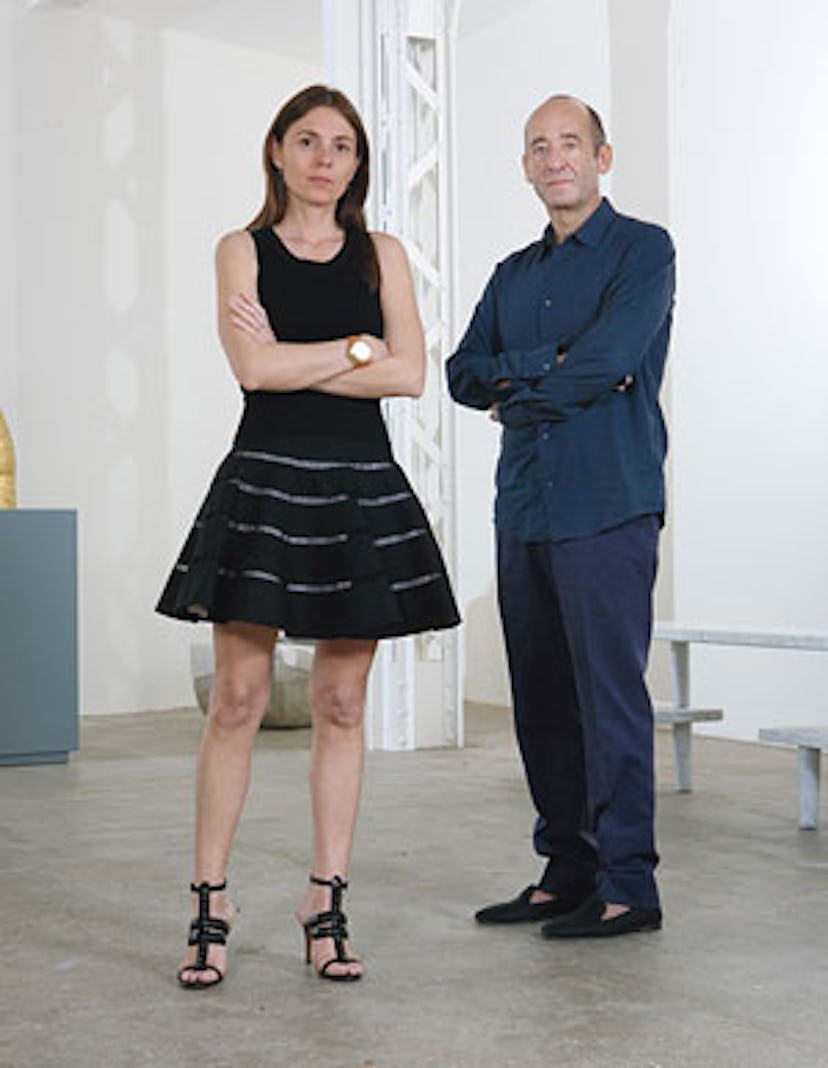Didier Krzentowski freely admits that he doesnât like spending too much time at his Paris design gallery, Kreo. He prefers to be out, roaming around. âWhen Iâm in the gallery, Iâm not seeing things or hearing ideas,â he says.
But that hasnât stopped Krzentowski from expanding to a large space in posh Saint-Germain, formerly a nightclub called Rubyâs. It remains to be seen whether the new digs, opening in September on rue Dauphine, will cajole the peripatetic gallerist to stay put. Still, to the design community, which has watched him emerge as one of its most influential dealers (Kreoâs sales exceeded $10 million last year), the move signals the robust health of his trade.
After years of collecting contemporary art and furniture, Krzentowski, 54, and his wife Clémence, 41, opened Kreo a decade ago in a cramped boutique in the gritty 13th arrondissement with the idea that it was time to ask designers to create limited-edition pieces, available for purchase to a select few. The formula took off. Meanwhile, the out-of-the-way neighborhood seemed poised to become Parisâs answer to New Yorkâs Chelsea, as a generation of innovative gallerists moved in. Since then, many of those dealers, including Emmanuel Perrotin and Fabienne Leclerc, have relocated to chicer zip codes. Though Krzentowski plans to keep his original space as an annex, heâs unsentimental about the move. âSaint-Germain has much better restaurants,â he quips.
The new Left Bank location, with its concrete floors and white walls (fashionable French interior designer Laurent Buttazzoni is heading the overhaul), is a stark carcass with exposed vestiges of a 17th-century archway and an impressive Eiffel-style metal ceiling. For the opening, Krzentowski has enlisted each of the star designers in his stable to create an exclusive piece. Marc Newson will present a carbon ladder; Konstantin Grcic, a carbon lounge chair; and Hella Jongerius is working on a wood and resin coffee table. Others crafting special items include Ronan and Erwan Bouroullec, Pierre Charpin, Jasper Morrison, Martin Szekely and Naoto Fukasawa.
âOur designers are a little family with one thing in common,â says Krzentowski with Gallic swagger. âNone make compromises.â
Such rhetoric is deliberate thunder in a profit-driven métier in which designers often are forced to rein in creativity due to price and production limitations. Krzentowski, who formerly ran a skiwear business, isnât interested in design for the masses. By bankrolling production himself, he says, he is able to create a âlaboratoryâ to explore ideas that often are too complex, expensive or intellectually challenging to be viable on an industrial level.
Past examples range from Newsonâs sleek aluminum Zenith chair to Morrisonâs intriguing glass cabinets that display resin objects evocative of antique pottery. âItâs a cabinet that doesnât open,â relates Krzentowski. âItâs totally unpractical.
But it makes you think, and that is its function. What counts today is image. We all know image is what advances things.â
Though his limited-edition approach may be unapologetically elitist (François Pinault, Karl Lagerfeld and Azzedine Alaïa are among Kreoâs deep-pocketed clients), Krzentowski insists that heâs not at odds with the more functional emphasis of mainstream design.
âDesign is not art,â he says. âArt has no constraints. With design the constraints are clear: Itâs to make things that are practical, or things that talk about design. Kreo is giving designers freedom.
âMy dream,â he continues, âis that we can do things in the gallery that will become part of the history of design.â
